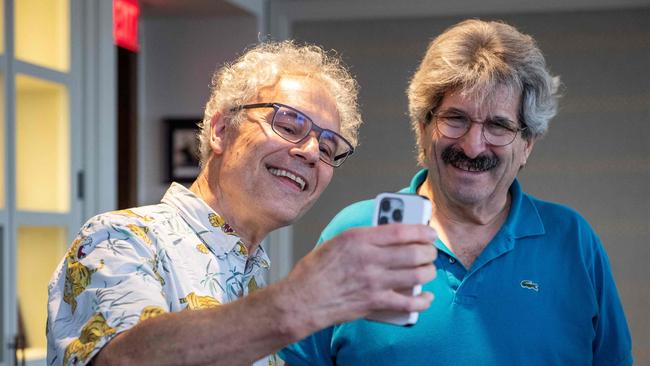Nobel winners found tiny genetic switches
Americans Gary Ruvkun and Victor Ambros have won the 2024 Nobel Prize in Medicine for their groundbreaking discovery of genetic switches that exist across the tree of life.

Harvard geneticist Gary Ruvkun vividly remembers the late-night phone call with his longtime friend and now 2024 Nobel Prize in Medicine co-laureate Victor Ambros, when they made their groundbreaking discovery of genetic switches that exist across the tree of life.
It was the early 1990s. The pair, who met a decade earlier and bonded over their fascination with an obscure species of roundworm, were exchanging datapoints at 11pm.
“It just fit together like puzzle pieces,” Ruvkun said from his home in Boston, shortly after learning of the award on Monday. “It was a Eureka moment.”
What they had uncovered was microRNA: tiny genetic molecules that act as key regulators of development in animals and plants, and hold the promise of breakthroughs in treating a wide range of diseases in the years ahead. Although these molecules are only 22 “letters” long – compared to the thousands of lines of code in regular protein-coding genes – their small size belies their critical role as molecular gatekeepers.
“They turn off target genes,” Ruvkun said. “It’s a little bit like how astronomy starts with looking at the visible spectrum, and then people thought ‘If we look with X rays, we can see much higher energy events’.
“We were looking at genetics at much smaller scales than it had been looked at before.”
Their discovery had its roots in early investigations into C. elegans, a 1mm-long roundworm.
Ambros and Ruvkun were intrigued by the interplay between two genes that seemed to disrupt the worm’s normal development – causing them either to stay in a juvenile state or acquire adult features prematurely.
The genetic information contained in all our cells flows from DNA to messenger RNA (mRNA) through a process called transcription and then on to the cellular machinery, where it provides instructions on which proteins to create. It’s through this process, understood since the mid-20th century, that cells become specialised and carry out different functions.
Ambros and Ruvkun discovered a fundamentally new pathway for regulating gene activity through microRNAs, which control gene expression after transcription.
They published their findings in successive papers in Cell in 1993, but at first the discovery was dismissed as an esoteric detail, likely irrelevant to mammals. “We were considered an oddity in the world of developmental biology,” Ruvkun said.
That all changed in 2000 when Ruvkun’s lab discovered another microRNA present throughout the tree of life, from roundworms to mollusks, chickens and humans.
More than 1000 microRNAs have been identified in human DNA. Trials are now under way to develop microRNAs as treatments for heart disease.
AFP



To join the conversation, please log in. Don't have an account? Register
Join the conversation, you are commenting as Logout